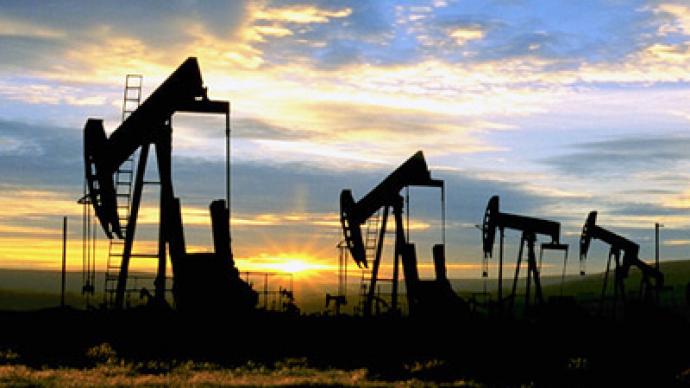Global oil demand is increasing at almost twice the pace of supply, according to the US Energy Department. This has led to predictions oil may reach peaks not seen since 2008. West Texas Blend is currently trading at just over $90 a barrel.
Harry Tchilinguirian, head of commodity markets strategy at BNP Paribas, gives a professional review and outlook on market conditions to RT. RT: How long do you expect the current rally to last and what's your price target?HT: Certainly at BNP Paribas we’re looking for a new trading range for WTI at least, a level shift up from last year in a loose 80 to 90 area, now I know this is being tested right now, but we see a number of fundamental obstacles before oil prices could rally the way the way they did in 2008. RT: What kind of oil price are you looking for at the end of the year?HT: Well we are looking to an average closer to $95 again we have to get over some obstacles as I was saying earlier. We are looking at relatively elevated inventories in the OECD countries, we are looking at OPEC’s spare production capacity of 6 million barrels per day and of course we are looking at non-OPEC supply that’s relatively decent heading in 2011, we’ll see a lot of production coming out of Russia, Colombia, China and more importantly Brazil. So these are factors that we need to contend with before we could rise the way we did in 2008 when spare production capacity was virtually nil, the inventories were extremely low and the refining system didn’t have the ability to refine what OPEC could produce then. RT: How much of this growth is driven by fundamentals? Are you expecting demand to continue growing?HT: Certainly oil demand will keep on growing. Last year we had a big catch-up from the recession lows of 2008 and 2009. We should be growing probably in the area of 1.5 million barrels per in 2011, certainly that is true. Now the thing is, when does that demand.start.to have an effect and you need to overcome these supply barriers first.The other aspect I think that people are not really focusing on is the threat of inflation, especially in emerging markets. When you look at what’s happening in Asia, particularly China – and again China raised reserve requirements for its banks – the threat of inflation and the subsequent monetary tightening could lead to lower growth prospects, but also could dent risk appetite, and if that happens you’ll have less liquidity flowing into risky assets such as equities and commodities. So we’re a little bit more cautious on what’s going to happen over the next couple of quarters, but certainly as the fundamental barriers, the supply side barriers, are overcome over the course of the first half of this year, then we could see oil prices rising. Now we don’t see that happening just yet.RT: Could we see a dramatic decrease following this rally, or are we in a totally different macroeconomic environment now?HT: I think what people forget in 2008 is we had both an economic recession and a financial crisis, and these came one on top of the other. The world economy was beginning to slow at the beginning of 2008, and by the time we got to September and when Lehmann went bust, we had a financial crisis on our hands and that was a double-whammy. We’re not expecting that this year. However, coming back to risk appetite, there’s other risks out there, namely sovereign risk, and if we see sovereign risk come up because of high debt-levels as we’ve seen in Europe, then market sentiment could change and then you could have prices evolve less slowly to the upside. Now I think that’s really the key here: between growth, risks to risk appetite, inflation risks, and of course the higher prices could feed back into the economy and slow growth prospects.RT: Would you say that oil is a good investment at the moment?HT: That’s always a tricky one. The question is, do you go in at 90, or do you wait for a retrenchment? I think over the longer term you’ll find investors are looking to commodities as a way of diversifying their portfolios and it’s not just oil, it’s industrial commodities like copper, a number of these suffer from supply-side constraints that would tend to indicate that over the course of the medium term, they would be on the upside.


